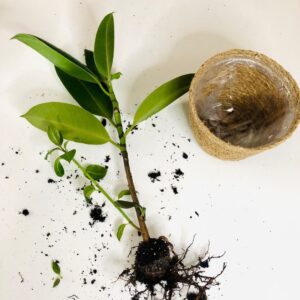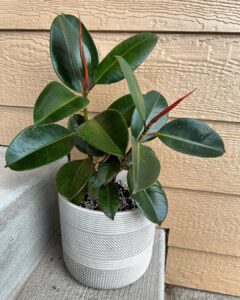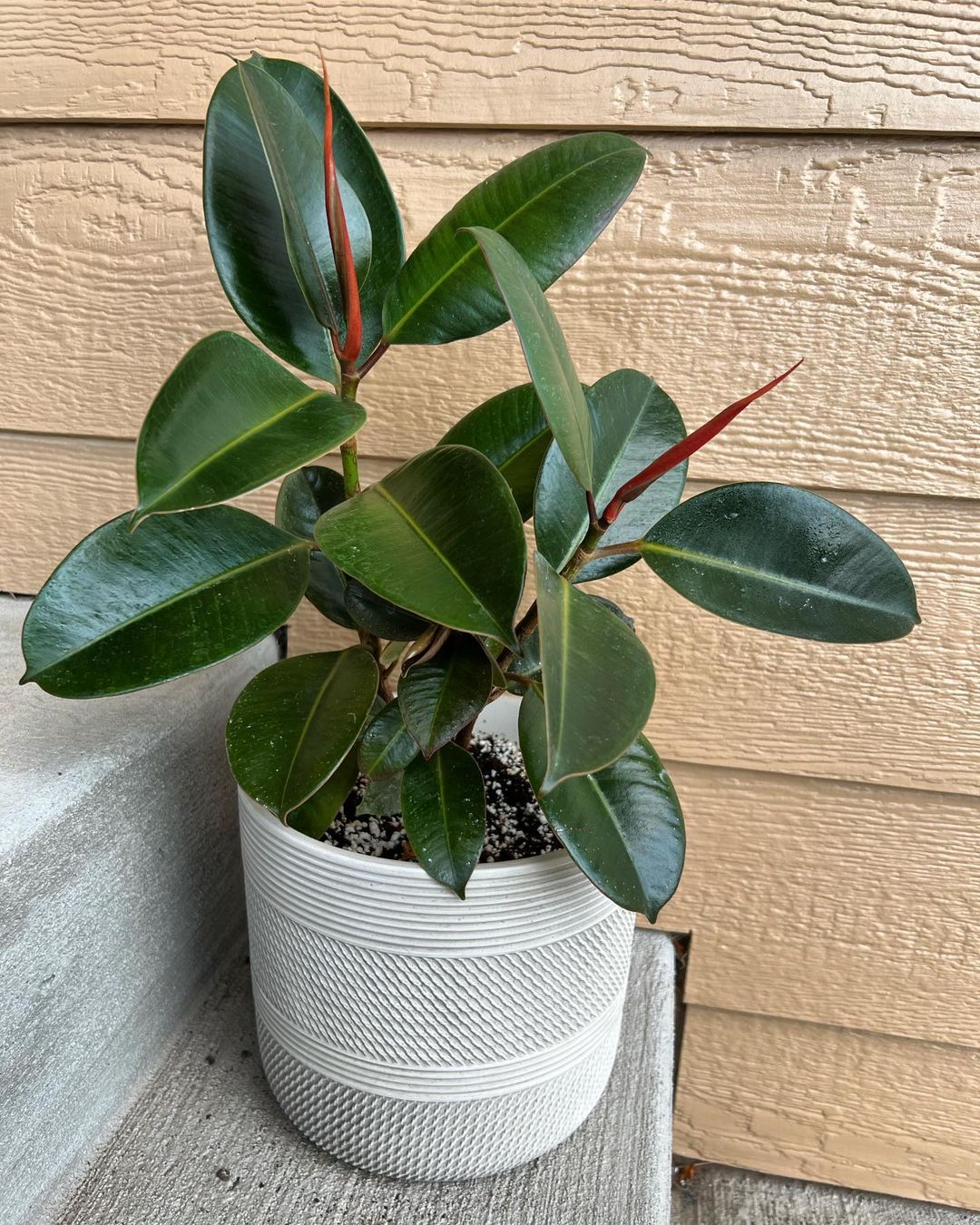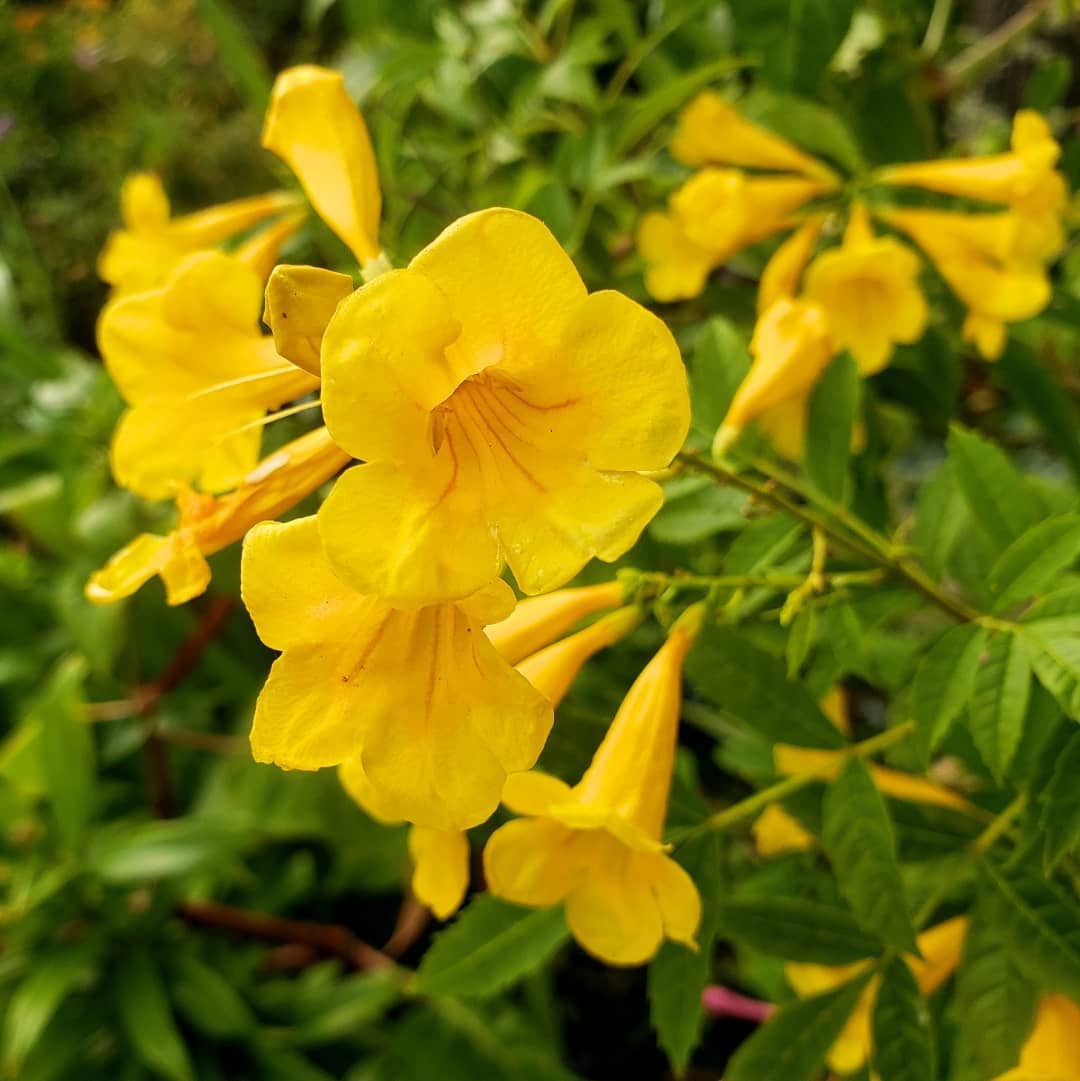Discover why Rubber Plant Leaves Curling and Falling Off (Reasons and Solutions) with expert tips to prevent this issue.
The rubber plant (Ficus elastica) is easily identifiable due to its tall stature, dense foliage, and lustrous, dark green leaves. Despite being generally low-maintenance, rubber plants may encounter issues such as leaf curl, which can be attributed to a variety of factors. Find Why Rubber Plant Leaves Curling and Falling Off (Reasons and Solutions) in this post.
Read Common Bird of Paradise Problems and Solutions Guide
Rubber Plant Leaves Curling and Falling Off?

1. Underwatering
The primary cause of rubber plant leaf curling is underwatering, as the plant responds by curling its leaves to minimize water loss. To determine if underwatering is the issue, check the moisture level of the soil. Additionally, inspect the leaves for signs of leaf scorch, indicated by crispy brown tips and edges, as well as drooping or wilting.
Solution: Thin and curled leaves on your rubber plant that plump back up after watering indicate that the plant may require more frequent watering. Consider upgrading to a larger pot that can retain water for a longer duration. In general, it is advisable to water your plant before it reaches the point of tapping into internal reserves.
2. Overwatering
While overwatering is not the most frequent cause, it can lead to curling or droopy leaves in a rubber plant. This occurs because excessive moisture in the potting mix restricts oxygen supply to the roots, hindering their ability to absorb water and nutrients effectively.
Solution: To prevent overwatering and establish a suitable watering schedule, check the topsoil using your finger. If it feels dry up to 1 or 2 inches, it’s time to water your rubber plant. By following this method, you can avoid waterlogging the plant. Typically, watering every one or two weeks is appropriate for a rubber plant during the active growth period in spring and summer. However, watering frequency can be reduced during fall and winter when growth slows down.
3. Low Humidity
Insufficient humidity or dry air can lead to increased moisture loss from the leaves of your Ficus elastica. In response, the rubber plant leaves curling may occur inward or upward to minimize this loss.
Indications of low humidity include;
- Leaves with crispy brown tips and edges
- High water requirements
- Drooping and wilting leaves
- Stunted growth
Solution: Rubber plants thrive in environments with moderate to high humidity levels, preferably 50% or above. If your home has very low humidity, there are several measures you can take to increase it for your plant’s benefit. You can mist your plant, place a pebble tray filled with water nearby, relocate it to rooms with higher humidity and ample light, consider using humidifiers, or group plants together. The kitchen or bathroom are examples of rooms that typically have higher humidity levels.
4. Direct Sunlight
Rubber plants naturally grow in the shady understory and can reach heights of over 100 feet in the wild. When kept indoors, these plants should be protected from direct sunlight to prevent the curling of leaves, yellowing, and browning. Variegated rubber plant varieties are even more sensitive to excessive light.
Solution: If you notice these signs, check if the plant is placed near a window receiving direct sunlight in the morning or afternoon. If so, relocate it to a spot with milder light conditions.
5. Extreme temperatures and Cold Drafts
The curling of leaves in rubber plants can occur due to both high and low temperatures. In high temperatures or heat stress, the plant undergoes excessive water loss through transpiration as it tries to cool itself down. The rapid evaporation of moisture in high temperatures can trigger upward or inward leaf curling as a protective measure to minimize water loss.
Conversely, cold drafts and freezing temperatures can also cause leaf curling in rubber plants, although this is less common. It can be seen as an adaptive response to protect the plant from sudden thawing in case of frost.
Solution: Maintain a temperature range of 75-80°F (24-27°C) during the day and 60-65°F (15.6-18°C) at night for your rubber plant. Avoid temperatures below 55°F (10°C) and sudden fluctuations. During hot weather, provide shade, and keep plants away from heat-emitting appliances or vents. In cold winters, move outdoor plants indoors and avoid placing them near air conditioning vents.
6. Under or Over Fertilization
In rare cases, the reason behind rubber plant leaves curling and falling off is improper feeding.
Insufficient nutrients can cause rubber plants to droop and wilt. Apply rubber plant fertilizer monthly or every two weeks with a reduced dosage to keep the plant healthy. Avoid over-fertilization, as it can damage roots and lead to leaf curling, wilting, and browning.
Solution: Using a balanced houseplant fertilizer is highly effective for nourishing your plant. You can choose between all-purpose liquid plant foods or slow-release fertilizers specifically designed for houseplants, as both options work exceptionally well.
TIP: In case of over-fertilization, flush the soil with filtered water. Check the soil’s pH regularly to maintain a slightly acidic to neutral range (pH 5.5-7) for optimal growth.
Discover Hydrophobic Soil: Causes and How to Fix It
7. Transplant or Repotting Shock

If you notice that the leaves of your rubber plant are curling after repotting, transplanting, or moving it to a new location, it is likely a response to the shock it has experienced.
Solution: To minimize the shock and reduce root damage when your rubber plant experiences curling leaves, it is important to provide optimal light, temperature, and humidity conditions. Additionally, ensure that the potting soil is kept consistently moist but not overly saturated. Give your plant some time to recover before considering pruning.
8. Pests Issue
The curling of rubber plant leaves is typically not caused by pests, except in cases of fungus gnats or severe infestations. It is important to inspect the underside of leaves and hidden areas for sap-sucking pests such as spider mites, mealybugs, aphids, and scale insects. These pests may appear as small, immobile, or moving bumps or spots, some with wings and a fluffy body.
If your plant is affected by fungus gnats, the adult form poses no harm. However, it is the larvae that feed on the roots, leading to sudden wilting and drooping.
Solution: To address pest issues, you can employ insecticidal soaps, neem oil, or horticultural soaps as effective treatments. Additionally, it is crucial to thoroughly examine new plants and isolate those infested with pests to prevent the spread while treating them.
In the case of fungus gnats, you can pour a solution of 20% hydrogen peroxide (1 part peroxide to 4 parts water) into the potting mix, paying particular attention to the areas surrounding the roots.
9. New Growth

When new leaves emerge on a rubber plant, they initially appear curled and gradually unfurl as they mature. If you observe a small, tightly curled leaf standing upright, particularly during the spring or summer, it indicates that the plant is thriving and actively producing new growth.
Solution: Wait and watch till the curling leaves of the rubber plant unfurl.
10. Low Light
Rubber plants thrive in bright, indirect light to maintain chlorophyll production. While variegated varieties may tolerate slightly lower light levels, insufficient light can lead to reduced chlorophyll production, resulting in curling and drooping leaves.
Solution: If your rubber plant leaves are curling and the soil moisture is adequate, assess whether the room is too dark. Ensure there is enough light for comfortable reading, as even though rubber plants can tolerate some shade, they may need to be relocated if the current location is too dim for the leaves to stay firm and productive in photosynthesis.
Discover How to Care and Propagate Baltic Blue Pothos



